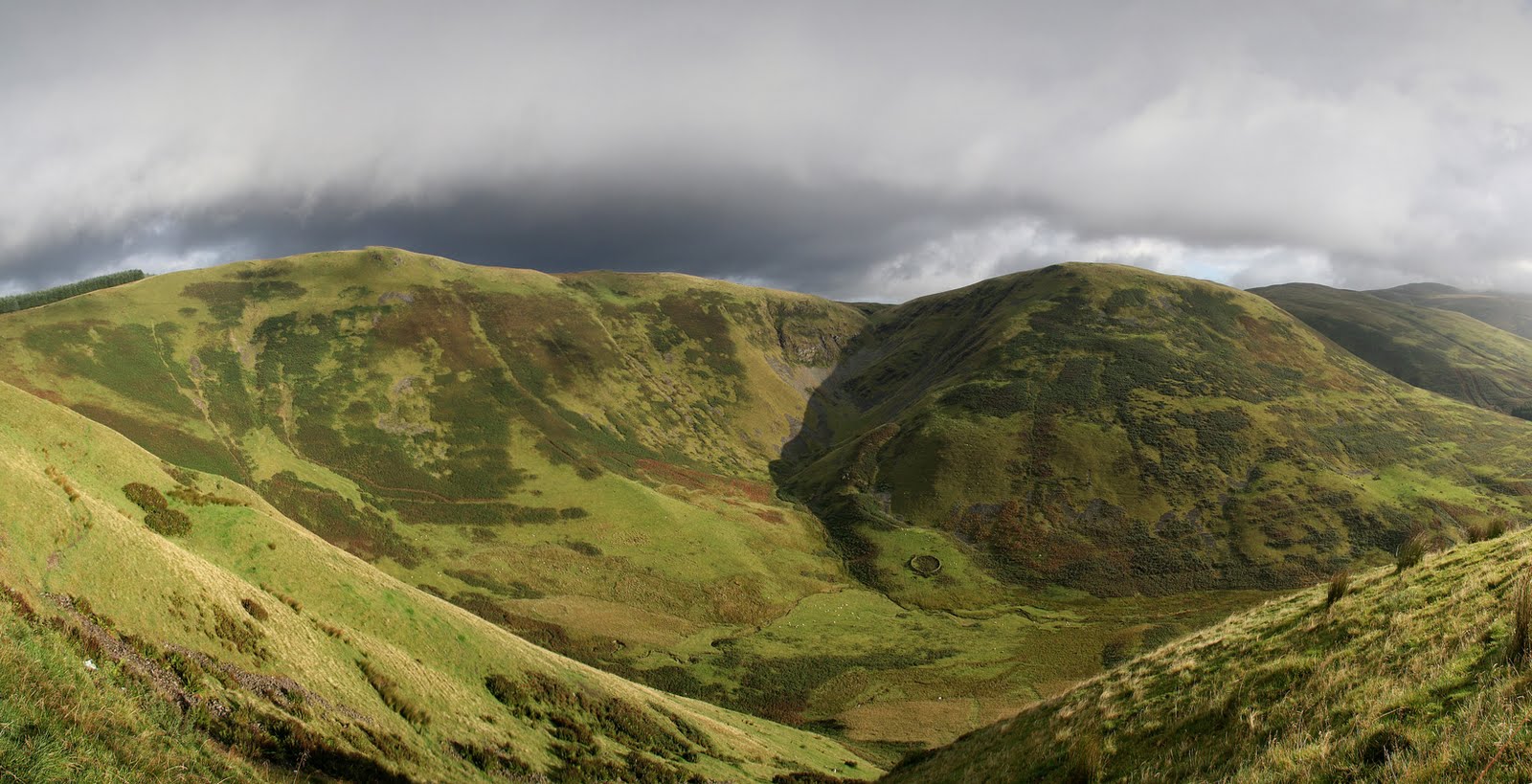The home of the Porteous family for
many hundreds of years was in and around Tweeddale and Annandale in Peeblesshire, southern Scotland. The River Tweed winds from its source in the south of the county between the moss-covered Scottish
hills, eventually emptying into the North Sea near the border with England at Berwick-on-Tweed.
Passing between the braes and fells of the Southern Uplands on both sides – rising to nearly 500 metres in some places – the Tweed flows from its source near Tweedhopefoot in the
southern part of Peeblesshire, past the standing stones placed by former inhabitants many thousands of years ago, and runs close past the site of Hawkshaw – where now only a modern farm
survives and the Porteous tower is marked by a cairn – on past the villages of Tweedsmuir, Stanhope and Drumelzier (home of the Tweedie
family, with whom the Porteous families had many dealings over subsequent centuries).
With the old road running close beside it, it continues its course through the valley between even higher hills – some of the between 600 and 730 metres – many topped by Iron Age
forts and settlements, it flows not far from the villages of Whitslade and Broughton on past Stobo Castle and the old county town of Peebles – and eastwards to
Selkirkshire and Roxburghshire to form a border between Scotland and England.
To the south, Tweeddale gives way to Annandale – the steep slopes forming the valley of the River Annan, whose source springs close to that of the Tweed, and overlooks the ancient
Roman road before it flows southwards past the historic town of Moffat and the old village of Applegarth close to Lockerbie, continuing on through Lochmaben to
Dumfriesshire – before it empties itself into the Solway Firth near Annan.
It was Tweeddale, the valley of the Tweed, that was the principal area around which the Porteous family first found their home in the fifteenth century. They are
first recorded as living at Hawkshaw, their fortified ancestral home (1439) and Glenkirk and Whitslade (1439), and within a hundred years we find mention of them in
Broughton (1550), Kilbucho and Peebles (1572). From this concise area of no more than twenty miles square, they gradually spread out from the Tweed to parts of the neighbouring
counties of Lanarkshire, Dumfriesshire and Roxburghshire – although, of course, no such thing as county boundaries existed then. It was just natural to follow river valleys and trackways to settle in
neighbouring hamlets, villages and towns.
|
|

And, in this way, from the sweet waters of the Tweed, they made their way across the westward hills to places like Lamington (1647) and Lesmahagow in modern Lanarkshire and
eastward to Newbattle (1635), Cockpen (1670) and Craiglockhart (1679) in Midlothian. And eventually, following the River Annan to the south, they spread through Annandale
(1650), Applegarth (1684), Lockerbie and Dumfries – and it was in this area that Porteous families settled in great numbers.
As has already been pointed out, Barry Porteous notes in his work 'The Porteous Story', "Throughout the length and breadth of
Annandale, Porteouses are to be found, and churchyard memorials and records in many places attest to their presence long before 1700."
|

![]()


